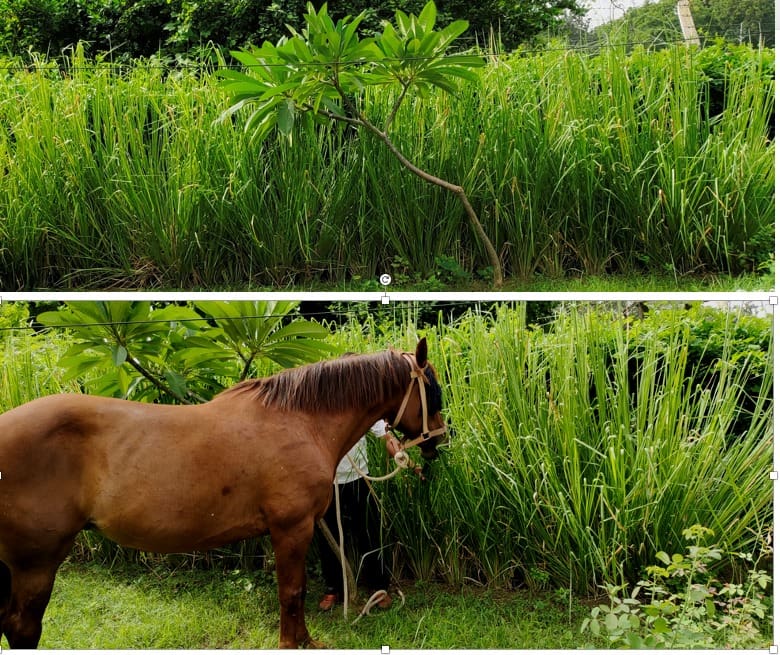Vetiver as a livestock forage source
Introductory photo essay VS_Forage.pdf (vetiver.org)
Vetiver grass, when correctly managed makes, an acceptable feed for livestock. It can be used as a “cut and carry” feed product, as well as on site grazing. In both cases timing of harvesting is critical. Vetiver’s nutritional value is best when the leaves are young – generally at about 60-80 cm in length – normal cutting interval is about every three months, although some farmers cut more frequently. On site grazing by cattle is probably best, following Alan Savory’s holistic methods. Intense grazing for short periods will help to ensure that livestock do not pick and choose, but eat all that is offered. There has been very little research on the grazing and management of vetiver for forage, a topic that warrants investigation. What we do know is that younger leaves have good nutritional value, that most livestock will eat it (especially horses), and that it is pretty much drought proof. Some observations from Nigeria appear to indicate that horses prefer C.zizanioides over C. nigritanus.

Feed value analysis of vetiver compared to Rhodes and Kikuyu grass
Under the right conditions (tropical) vetiver biomass yields are in the order of 100 tons dry matter/ha. Biomass yields vary tremendously between vetiver cultivars. Dr. Umesh Lavania (India) and his team have been investigating vetiver cultivars. Recently he released a new sterile cultivar named FORAGIKA that has softer leaves and double the biomass of other cultivars.



A Cooperative for cattle production based on Vetiver grass forage established In Yunnan Province, China Microsoft Word – cooperative of raising cattle.docx (vetiver.org)